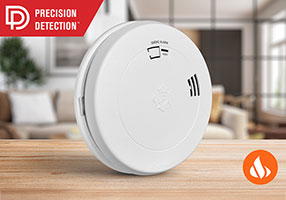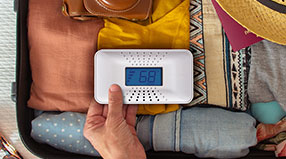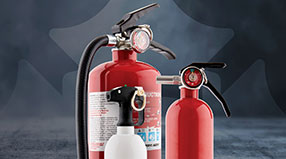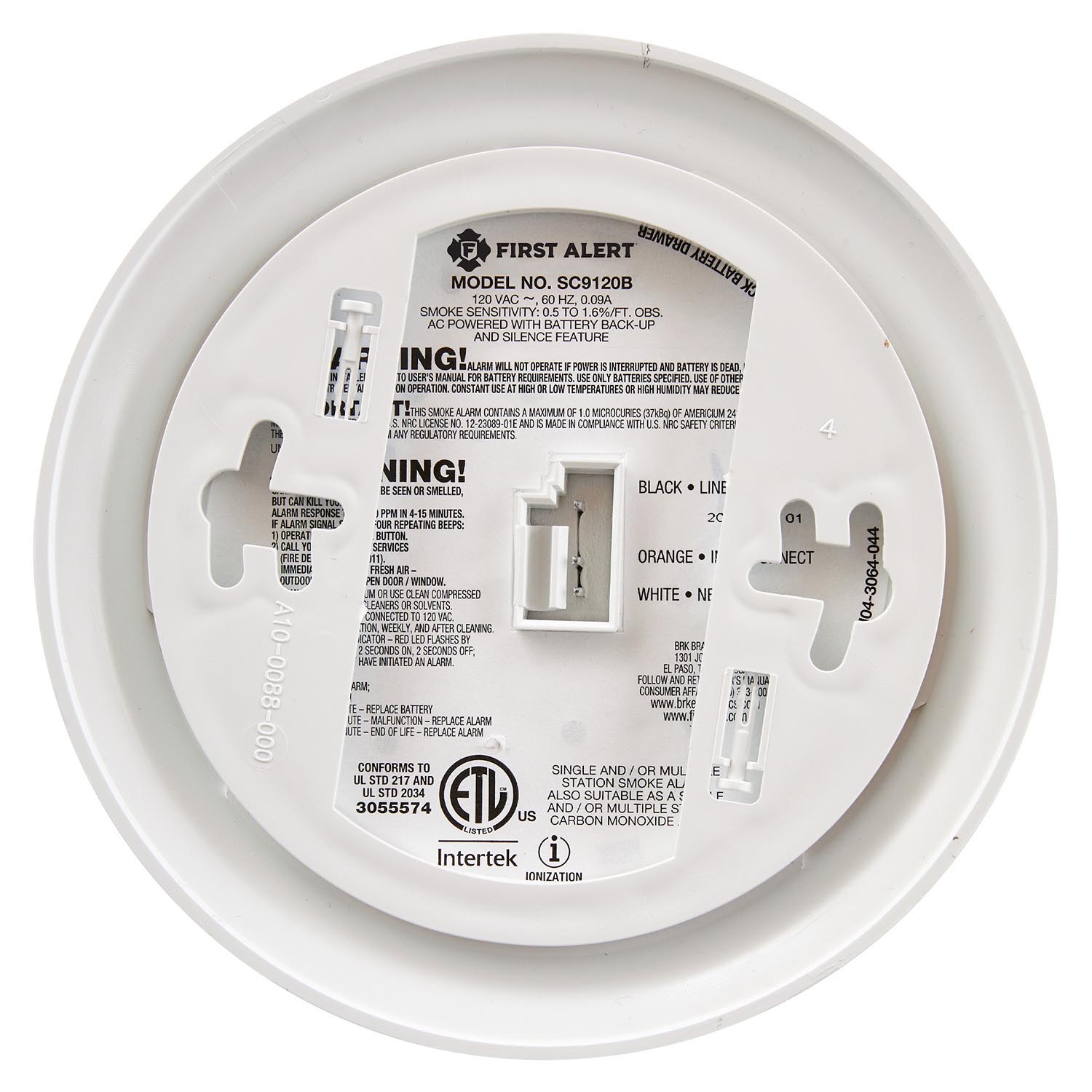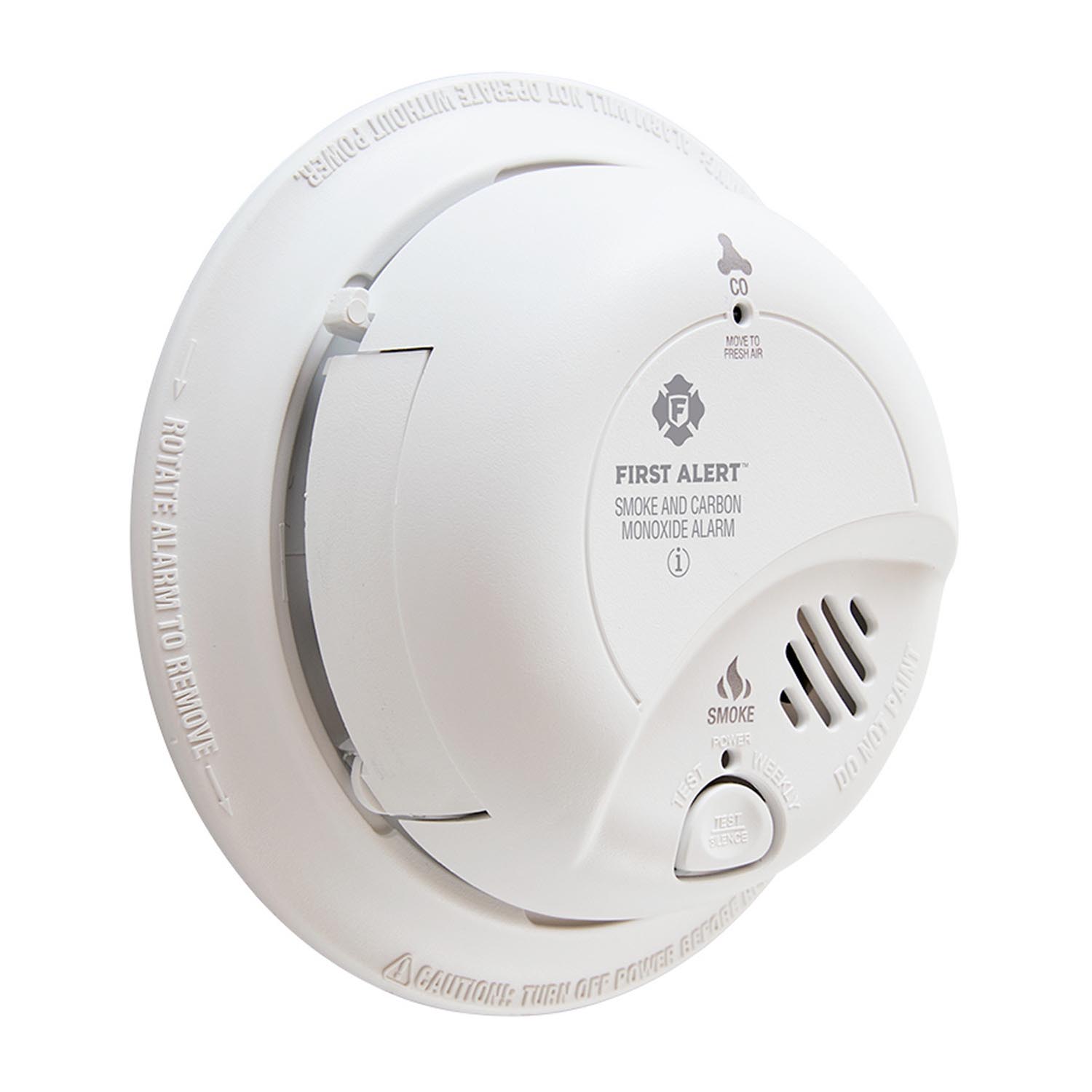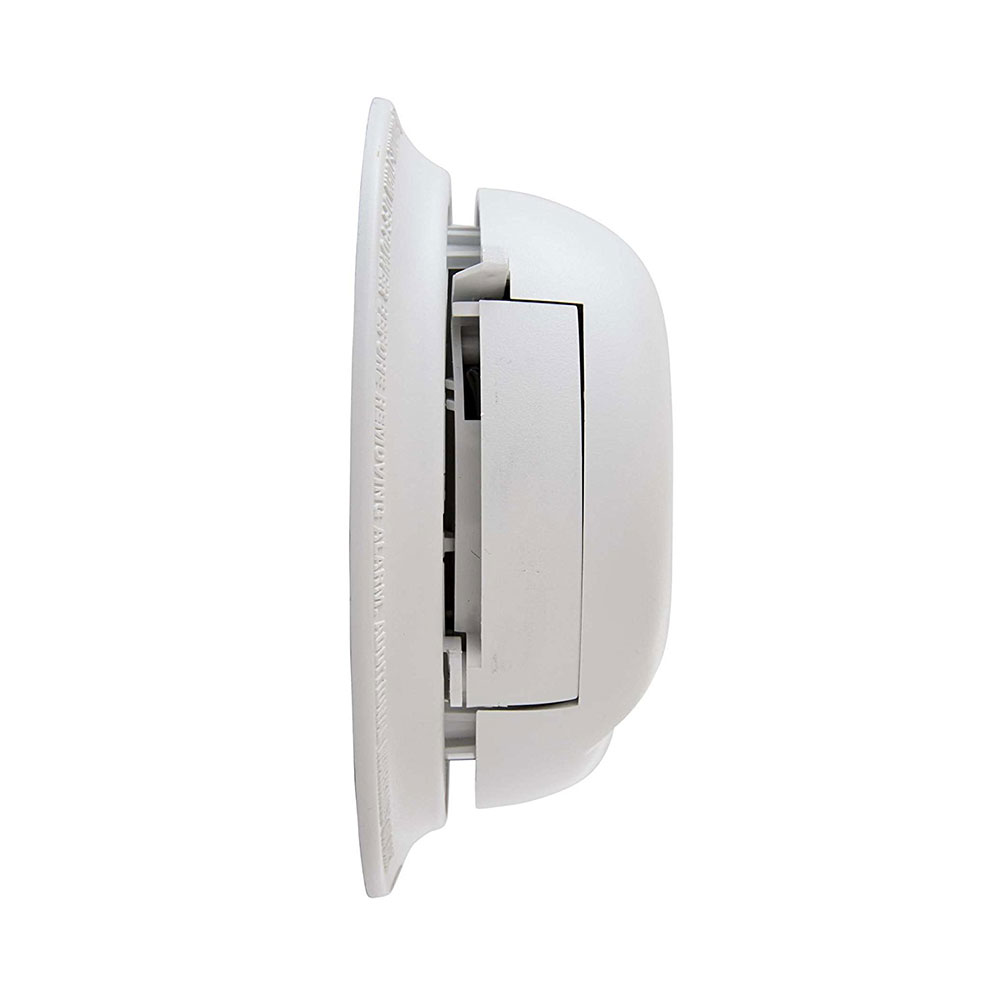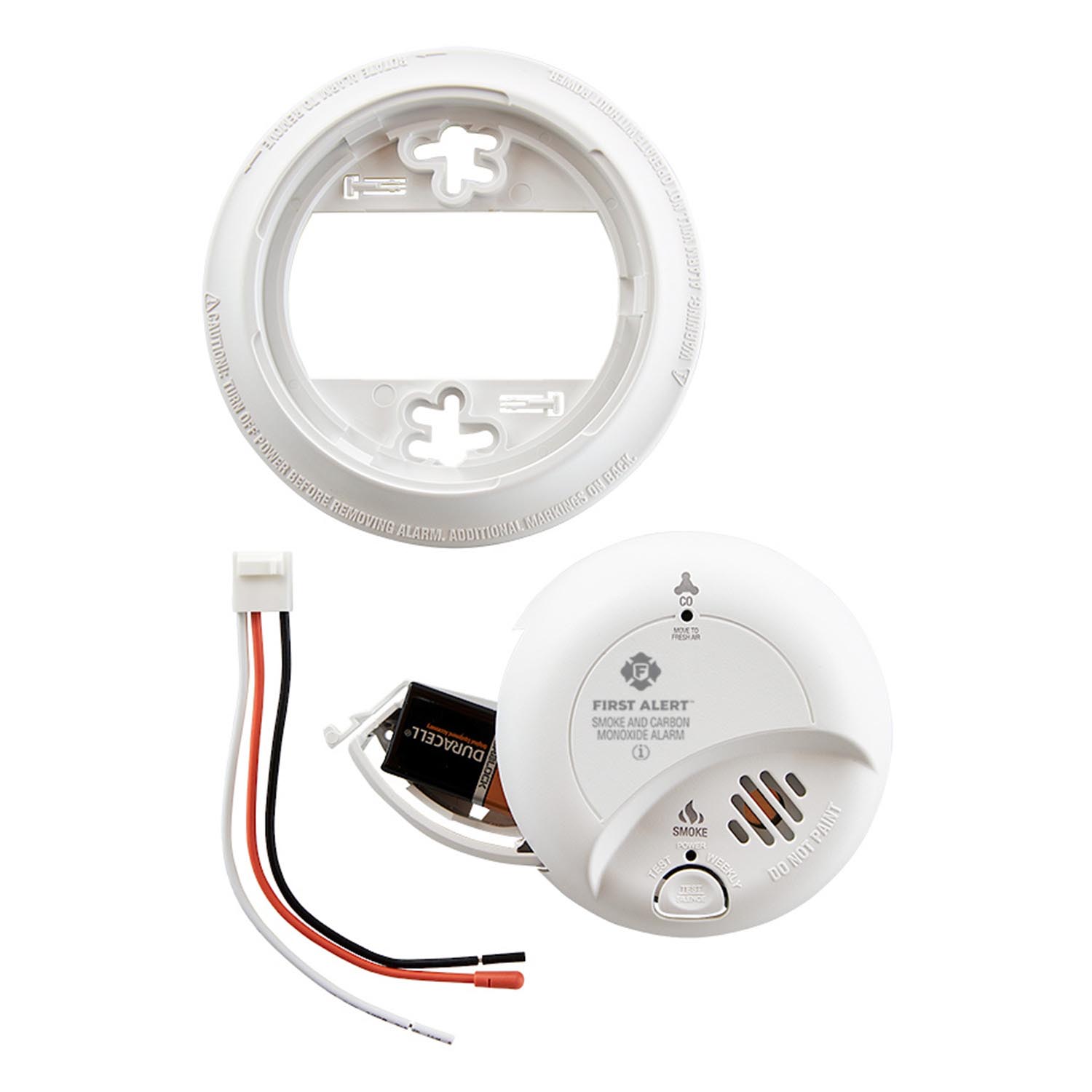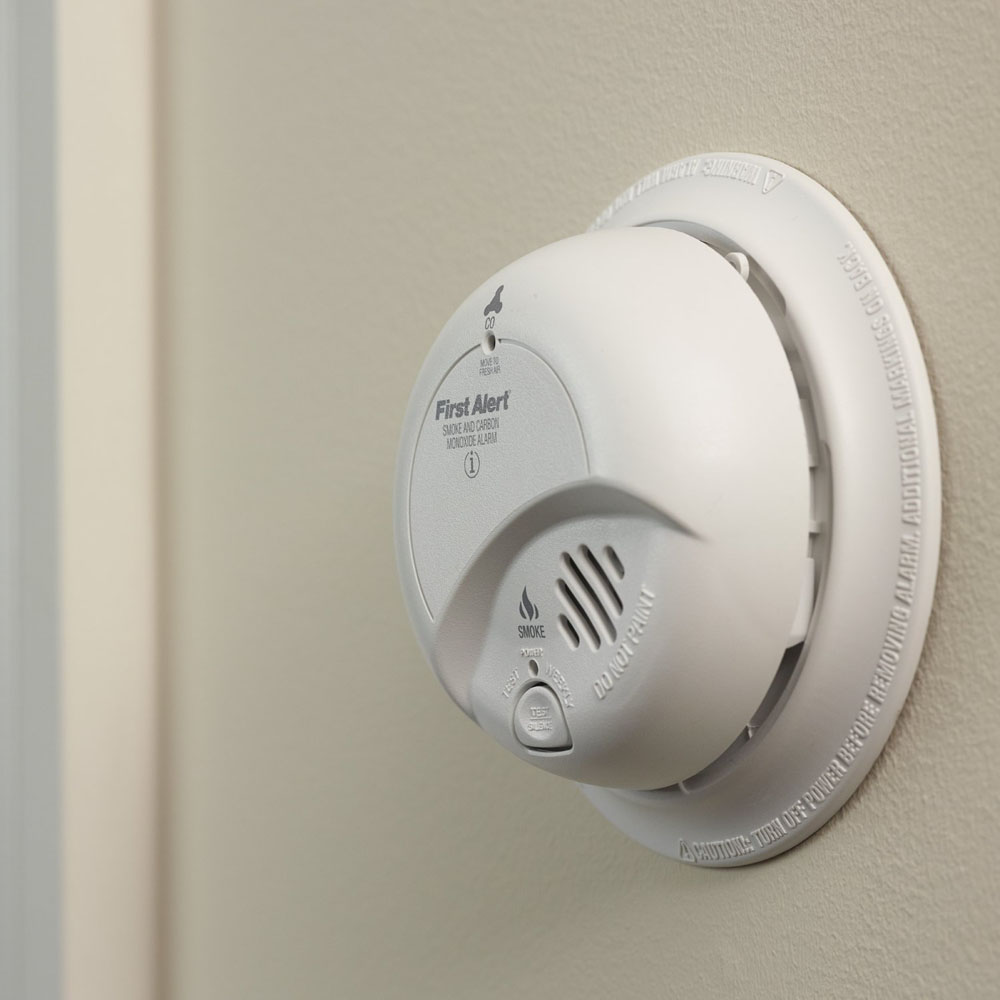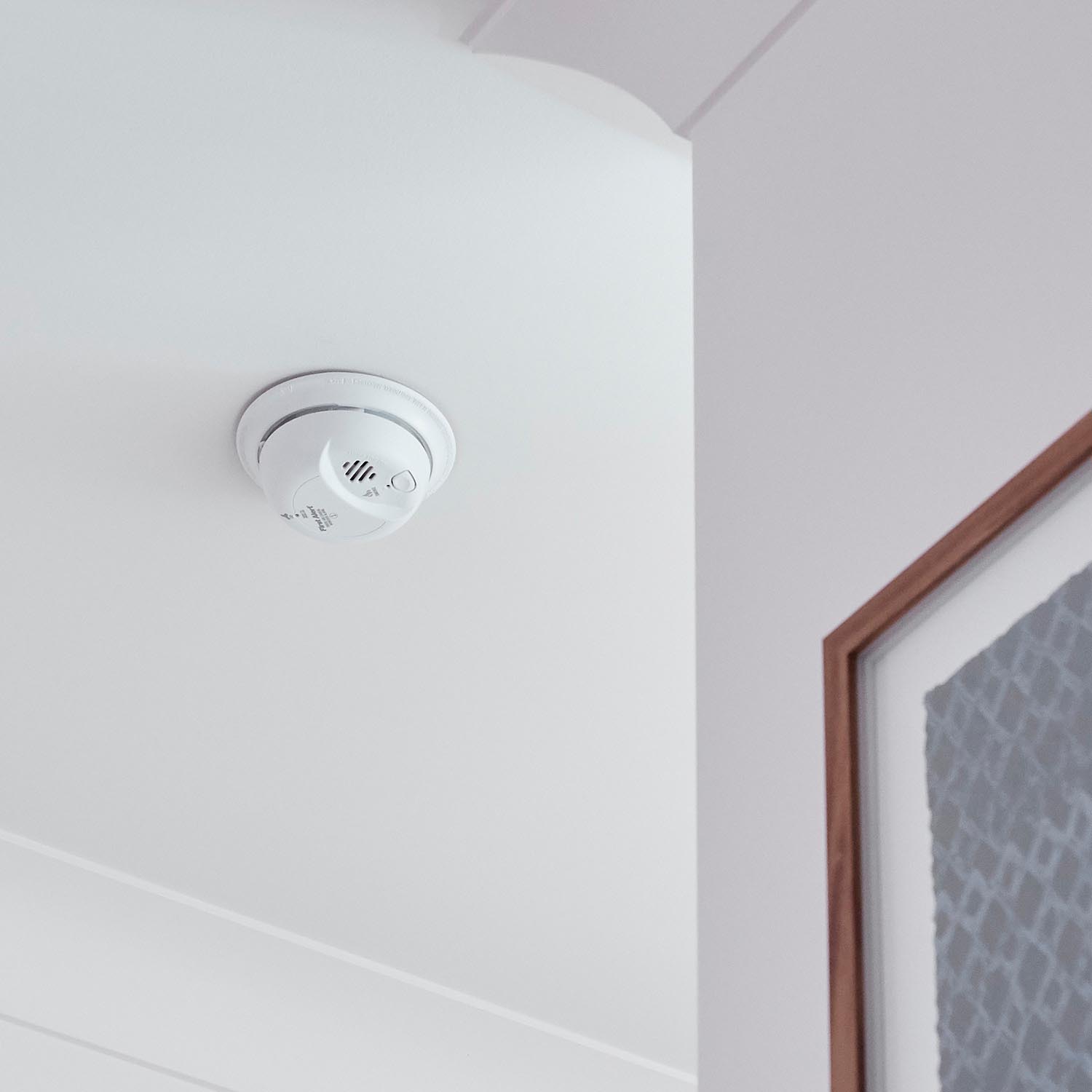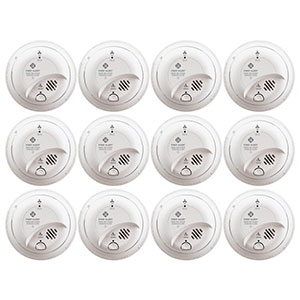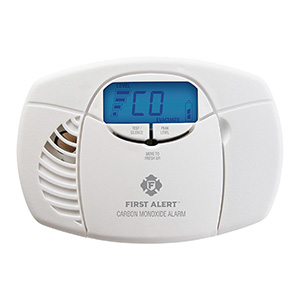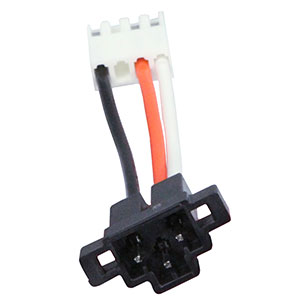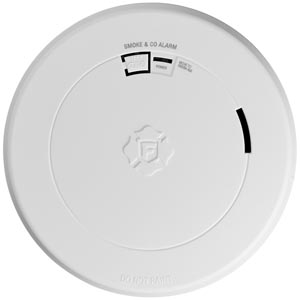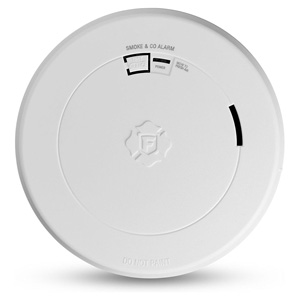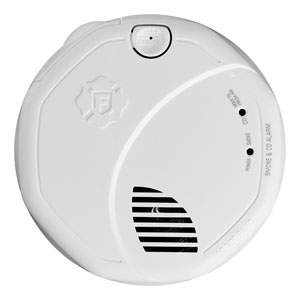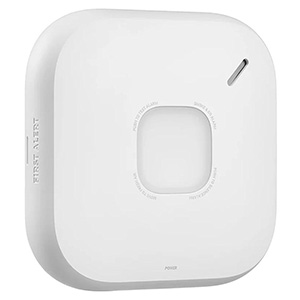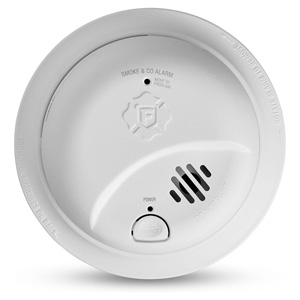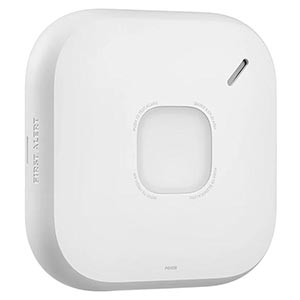First Alert Hardwired Combination Smoke/Carbon Monoxide Alarm with Battery Backup - SC9120B
Hardwired Combination Smoke/Carbon Monoxide Alarm
The First Alert BRK SC9120B Hardwired Combination Smoke and Carbon Monoxide Alarm uses an electrochemical CO sensing technology and Ionization sensor for smoke detection. It includes a 9-volt battery for continued function in the event of a power outage, and it features a test/silence button, tamper-resistant locking brackets, and a universal mounting bracket. This CO smoke detector can be connected to other compatible BRK and First Alert hardwired smoke and carbon monoxide detectors. Its latching alarm indicator automatically identifies which unit initiated the alarm–even after the conditions that set off the alarm have subsided.
Detects Smoke and Carbon Monoxide
Designed to meet the latest construction requirements, the First Alert Combination Smoke and Carbon Monoxide Alarm detects two threats, smoke and carbon monoxide. Lights on the face of the alarm tell you what the threat is, and false alarms can be silenced with a single button.
Connect to Other Alarms for Greater Coverage
This hardwired combination smoke and carbon monoxide detector can be connected to other compatible BRK or First Alert CO smoke detectors within a single-family residence. Once one alarm is triggered, all connected CO smoke alarms will sound. The latching alarm indicator on the CO smoke alarm automatically identifies which unit initiated the alarm–even after the conditions that set off the alarm have subsided.
Easy to Install and Maintain
The First Alert Combination Smoke and Carbon Monoxide Alarm integrates with existing wiring and features a universal mounting bracket that makes installing the unit quick and easy. The side-load battery compartment makes changing the 9-volt battery simple. Tamper-resistant locking pins prevent unauthorized disabling of the CO smoke alarm.
First Alert Hardwired Smoke/Monoxide Alarm SC9120B
How to Install First Alert SC9120B Hardwired Combination Smoke & Carbon Monoxide Alarms:
In this guide, we'll be showing you how to install First Alert Hardwired Smoke and Carbon Monoxide Alarms. Here are a few items you'll need before starting the installation process: Needle-nose pliers or utility knife, screwdriver, wire stripper, wire nuts and a ladder.
Hardwired Smoke or Carbon Monoxide Alarm Requirements:
- 120V household electrical circuit (unswitched 120VAC)
- Standard wiring junction box to a 4 in. (10 cm) size, on either the ceiling or wall
- Selecting an appropriate location to install your smoke and carbon monoxide alarms (see below guidelines for additional information):

- When installing an alarm on the wall, the top edge of an alarm should be placed between 4 in. (100 mm) and 12 in. (300 mm) from the wall/ceiling line.
- When installing an alarm on the ceiling, place the alarm as close to the center as possible.
- In either case, install the alarm at least 4 in. (100 mm) from where the wall and ceiling meet.
- First Alert Smoke Alarm FAQs
- First Alert Carbon Monoxide Alarm FAQs
Connecting First Alert Hardwired Alarms to 120V Wiring
To begin, turn off power at the junction box and connect your alarm to the building's electrical wiring.
- Locate the junction box and turn off power
- Remove the power connector from the new alarm's packaging
- Using wire nuts, attach the hot (black), neutral (white), and interconnect (orange) wires
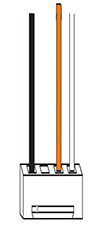
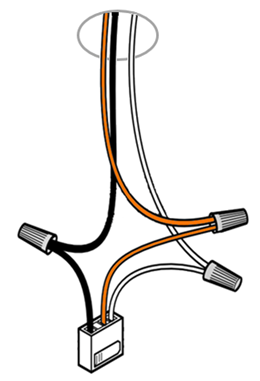
| Black wire (hot) |
Attach to black wire on power connector |
| White wire (neutral) |
Attach to white wire on power connector |
| Orange wire (interconnect) |
Standalone (single-station) alarm: This wire is not needed; tuck the orange wire into the junction box. Interconnected alarms:
|
Mounting First Alert Hardwired Alarms
- Secure the mounting bracket to the ceiling or wall using screws (included in the package)
- Insert the power connector into the plug on the back of your alarm
- Tuck any hanging wires into the junction box
- Position the base of the alarm onto the bracket and turn it clockwise until it's secured
- Remove the pull-tab to activate the backup battery
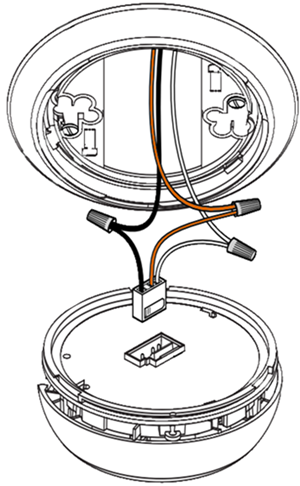
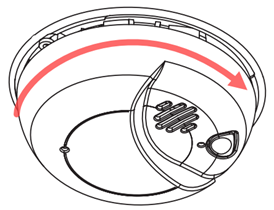
Installing Additional and/or Interconnecting First Alert Hardwired Alarms
If you are installing more smoke or carbon monoxide alarms, you'll want to repeat the process throughout the building. Interconnected smoke and co alarms must meet all requirements:
-
The same fuse or circuit breaker must power all interconnected alarms.
-
Up to 18 compatible detectors can interconnect, with a limit of 12 smoke alarms.
-
The total length of wire interconnecting the alarms should be less than 1,000 ft. (300 meters). This type of wire is commonly available at hardware and electrical supply stores.
-
All wiring must conform to all local electrical codes and NFPA 70 (NEC). Refer to NFPA 72, NFPA 101, and your local building code for more information.
-
Interconnect wiring diagram:
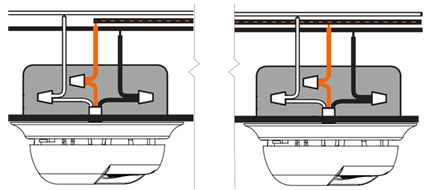
If you have any doubts or reservations about these interconnect requirements, please contact an experienced electrician to install your wiring and hardwired alarms.
Restoring Power and Testing Hardwired Alarms
Once you've installed your hardwired alarms, you'll want to restore power to the junction box. Under regular operation, the power indicator light on the alarm will shine/blink to indicate that it is receiving AC power.
Here's how you can test standalone or interconnected alarms:
-
Standalone Alarms: Press and hold the Test/Silence button until the unit triggers an alarm.
-
Interconnected Alarms: Press and hold the Test/Silence button until the first unit triggers an alarm. All interconnected detectors should sound off. Repeat this process to test each alarm in the interconnected series.
Other reasons include: It could be a different device or appliance such as a security system, monitor, carbon monoxide alarm, or other device which has a similar low battery or alert signal. Some of the same factors that cause unwanted alarms can cause intermittent alarms: dust and insects in the alarm or power interruptions in hardwired alarms. Improper wiring on AC or AC/DC smoke alarms. AC alarms will chirp every 5 seconds if the interconnect wire is grounded. The orange interconnect wire should NEVER be grounded; it should only be used to interconnect other smoke alarms or compatible devices.
- You may not be holding the test button down long enough. Try holding it down for up to 10 seconds (20 seconds on photoelectric models) .
- Your battery may not be installed properly or snapped all the way in place. Even if the alarm sounded briefly when the battery touched the terminals, you still need to make sure it is snapped securely in place. If the battery is loose, in cannot power the smoke alarm properly. After installing new batteries, be sure to test your smoke detector.
- Your AC power may not be on. AC and AC/DC units will have a power indicator light (red or green) that shines continuously when they are receiving electrical power.
- If you have a 10-Year model, the smoke alarm may not have been properly activated. If the tab broke away before the alarm was activated, you can use a toothpick to move the switch over to test the alarm.
- There may be insufficient battery power, try new batteries.
- Problems with voltage or insufficient electrical power (brown out) may cause a continuous weak sounding alarm. For AC or AC/DC models, temporarily disconnect power at the service panel until the brown out is over. If you do not restore the AC power, your smoke alarms cannot warn you of a fire.
- Incompatible warning device. If an incompatible alarm or auxiliary device is linked into a series of AC or AC/DC smoke alarms it may cause the system inadvertently go off.
- It is possible that your smoke alarm "silence" button was pushed by mistake. The alarm will now "chirp" once a minute for up to 15 minutes before resetting.
- Are you sure it's the smoke alarm? Funny to ask, but other devices have similar low battery chirps or warning tones.
- Your "new" batteries may not be fresh. If batteries are stored, especially in cold areas like refrigerators, they lose their charge more quickly. Always check the freshness date on the package when buying new batteries. Keep plenty of replacement batteries on hand so that you are sure to always be protected by your smoke alarms.
If it's time to replace your alarms, consider the NEW 10-Year Life series and never have to worry about a battery replacement for the life of the alarm.10-Year alarms are available in smoke, carbon monoxide and combination alarms.
Here are a few situations that may cause a carbon monoxide alarm "false alarm:"
- The carbon monoxide alarm needs to be relocated. Carbon monoxide alarms should be located 15-20 feet away from all fossil fuel burning sources like furnaces and stoves. Alarms should be located 10 feet away from sources of humidity like showers.
- Fossil fuel burning appliances may not be burning fuel completely. Check pilot lights/flames for blue color. Appearance of yellow or orange flames indicates incomplete combustion-a source of carbon monoxide.
- Power Source: Hardwired
- Battery Backup: 9V
- Sensor: Ionization and Electrochemical
- Interconnect: Can be linked with other compatible BRK and First Alert hardwired smoke and carbon monoxide detectors
- Intelligent Sensing Technology: Helps reduce nuisance alarms
- Noise Output: 85 dB in a T3 Pattern
- Single Button: One press to silence and test alarm
- Easy Installation: Perfect Mount System includes Gasketless Base
- Tamper Resistant: Includes Locking Pins
- Dust Cover: Keeps alarm clean during construction
- Improved UV Resistance: Keeps alarm from discoloring over time
- Standards: UL 217 and UL 2034
- Warranty: 10 Year Limited
- Product Dimensions (LxWxH): 5.6 x 1.9 x 5.6 in.
- Product Weight: .7 lbs.
- Smoke particles of varying number and size are produced in all fires. For maximum protection, use both ionization and photoelectric sensing technologies. Ionization alarms are generally more sensitive to fast flaming fires and photoelectric alarms are generally more sensitive to smoldering fires.
If you are interested in ordering a large quantity of items you may qualify for volume pricing discounts. Volume Discount Pricing is a great way for customers to save big on large, bulk orders of most items available in our store. Please send a bulk order request to our friendly sales staff so they may create a quote and provide personal service for your order! You will receive a response within 1-2 business days and our office hours are Monday through Friday, 8am-5pm CST.
- Let us know what products & the quantities you are interested in.
- Get a detailed quote from a dedicated sales rep.
- Our warehouse ships directly to you.
- You enjoy the savings & are now a preferred customer.
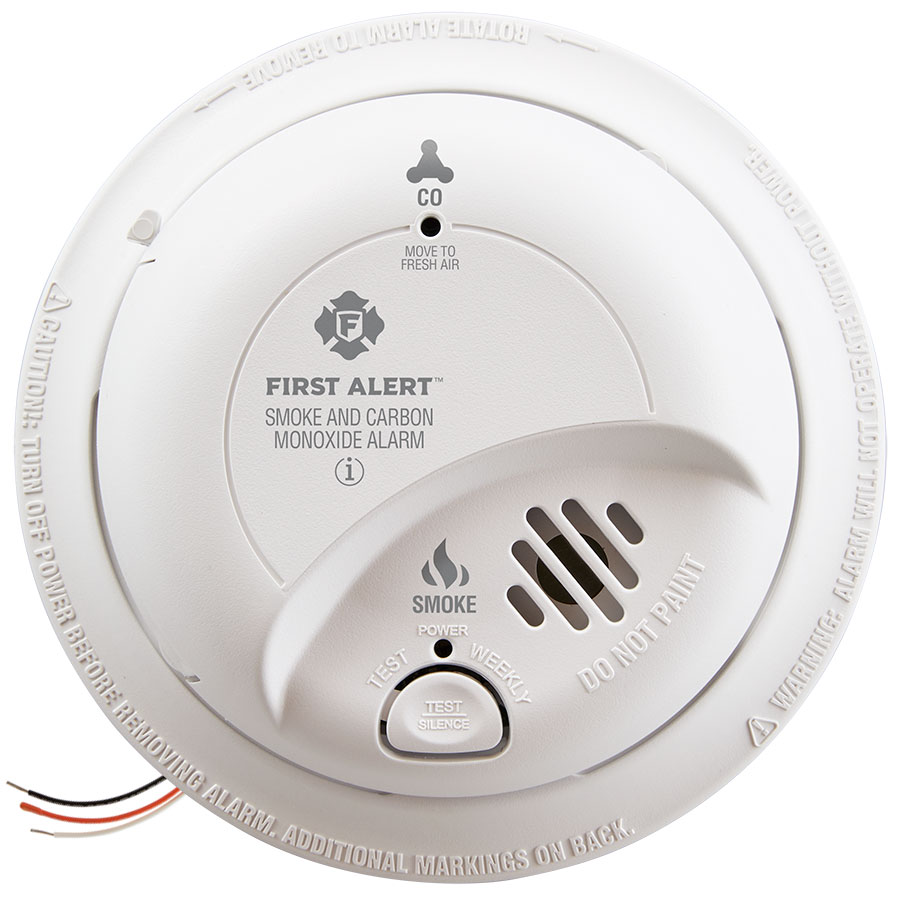
First Alert Hardwired Ionization Smoke and CO Alarm with Battery Backup Reviews
Unit tested as described in the instructions. Unit fitted nicely on the same place of the old unit without having to do any additional alteration and installation was quite easily by following all the steps in the installation instructions.
Replaced existing hard wire detector. The old detector was at the end of life and was triggering at random times. Since replacement all is well.
Installed 2 of them, one in the upstairs hallway and one in the main living area hallway for safety measures.
These all arrived in a timely manner and worked perfectly when we installed by ourselves.
The speed with which my order was filled quite surprised me. The gentlelady who took my call was, indeed, very gentle. The item arrived I plugged it in, putting an end to the nuisance of the chirp. Peace has returned.
Very good so far right out of the box
Very happy with first alert products for the past seven yrs.
I purchased First Alert smoke and monoxide alarms for my home. It's a great feeling knowing the safety that was installed ,not only for saving lives,but home protection as well.
Quick delivery, awesome prices and the mfg date is within a month or 2 of ordering date, better than getting it at the hardware or big box stores where the mfg date is 4-5 years old
Terrific product. Very effective to assure your safety.

